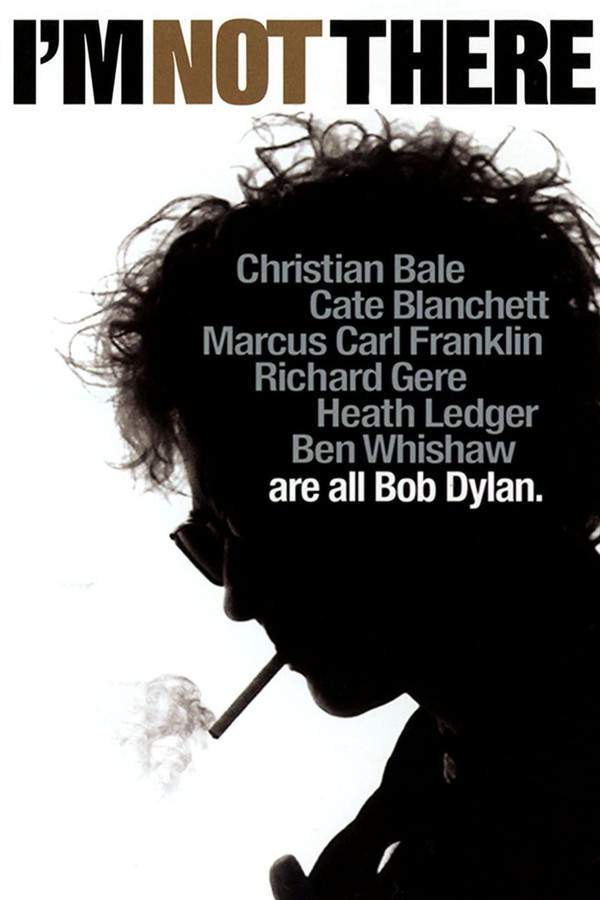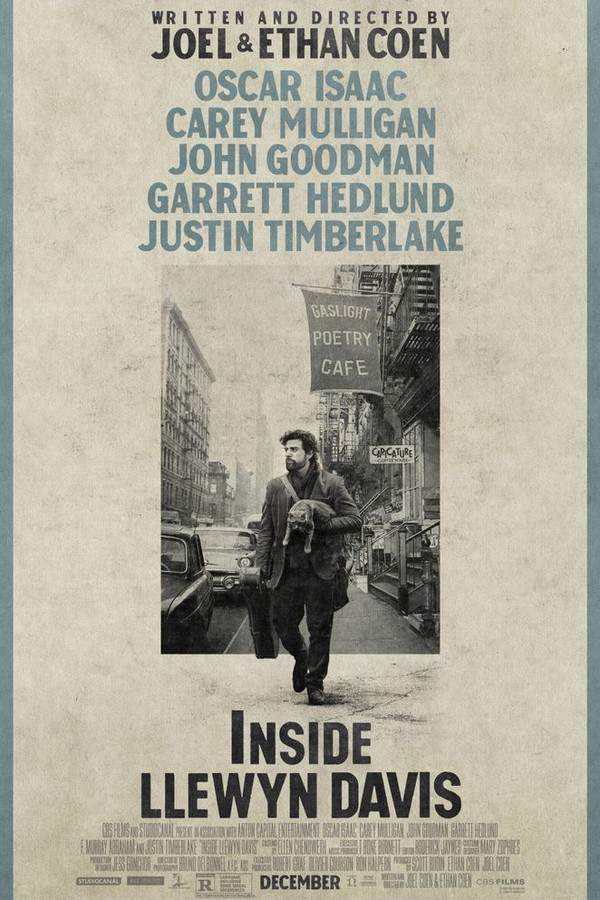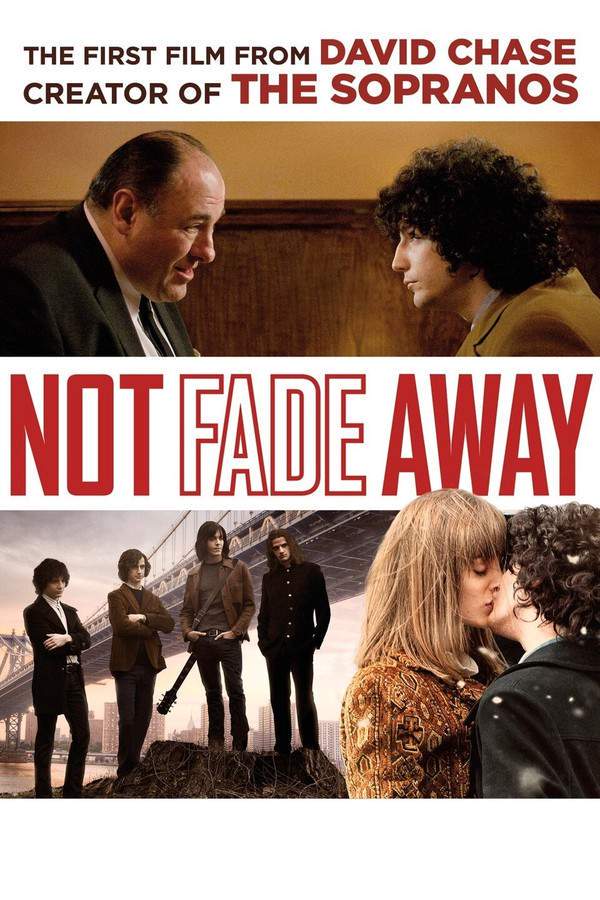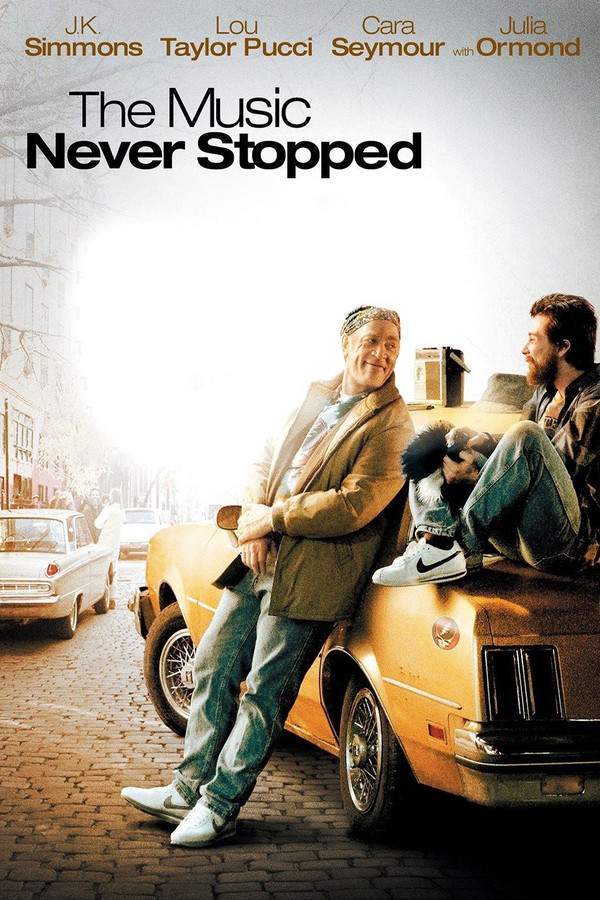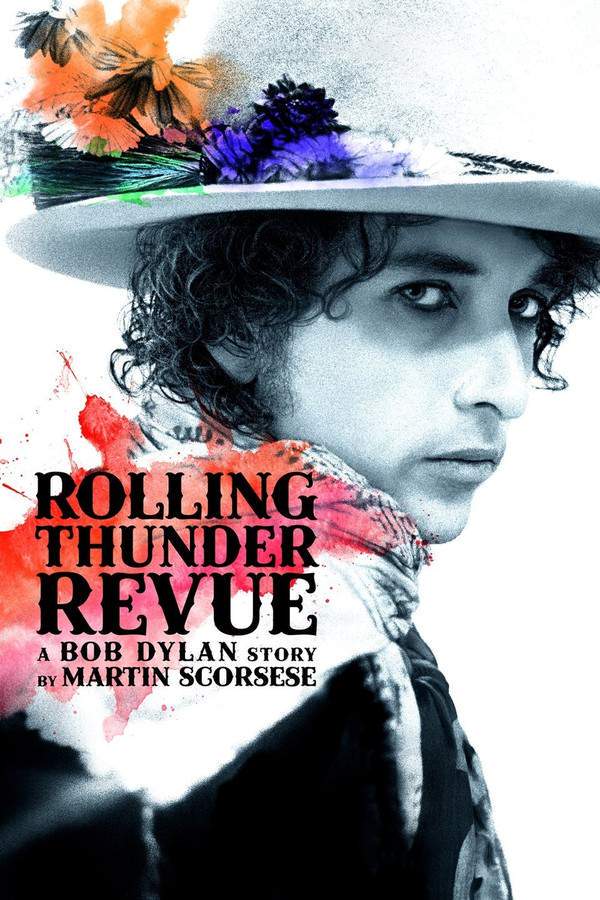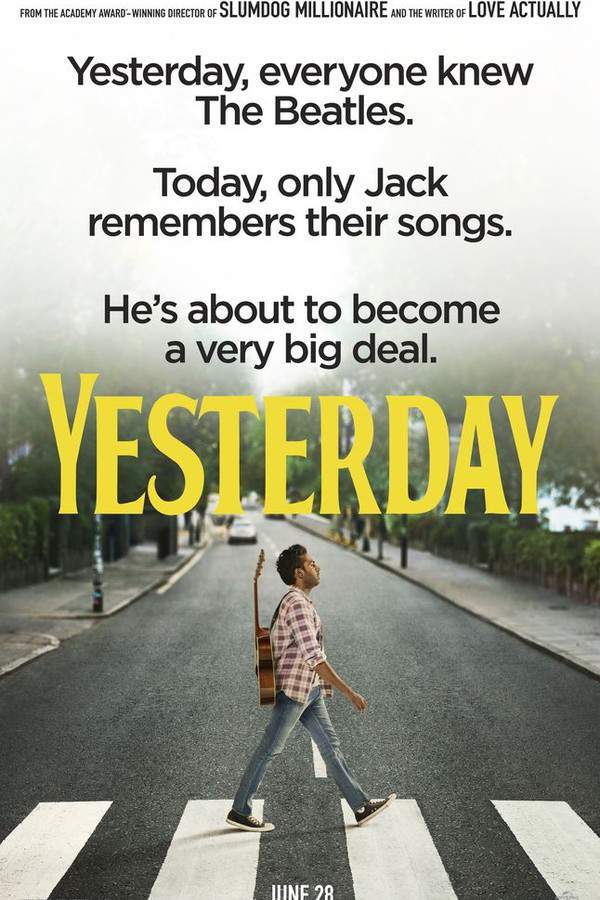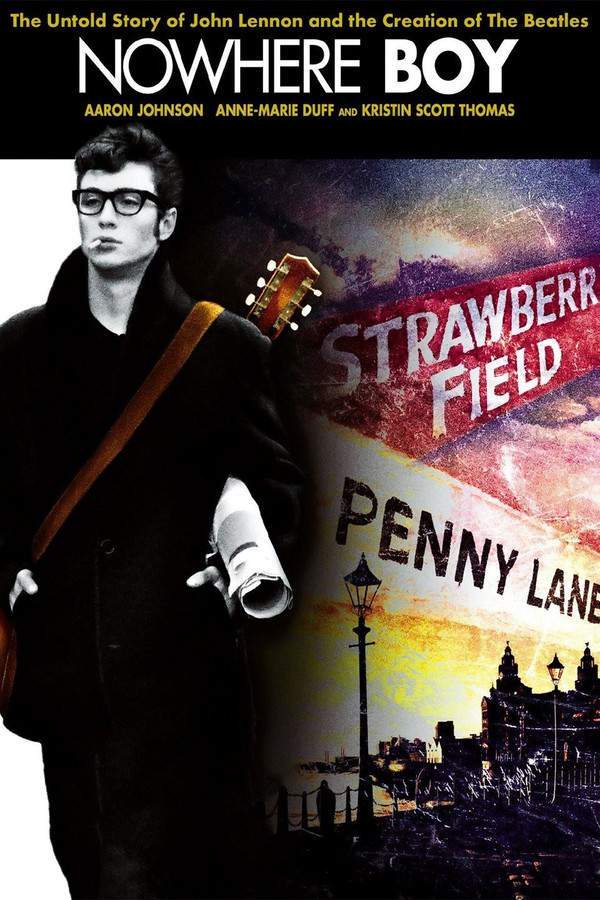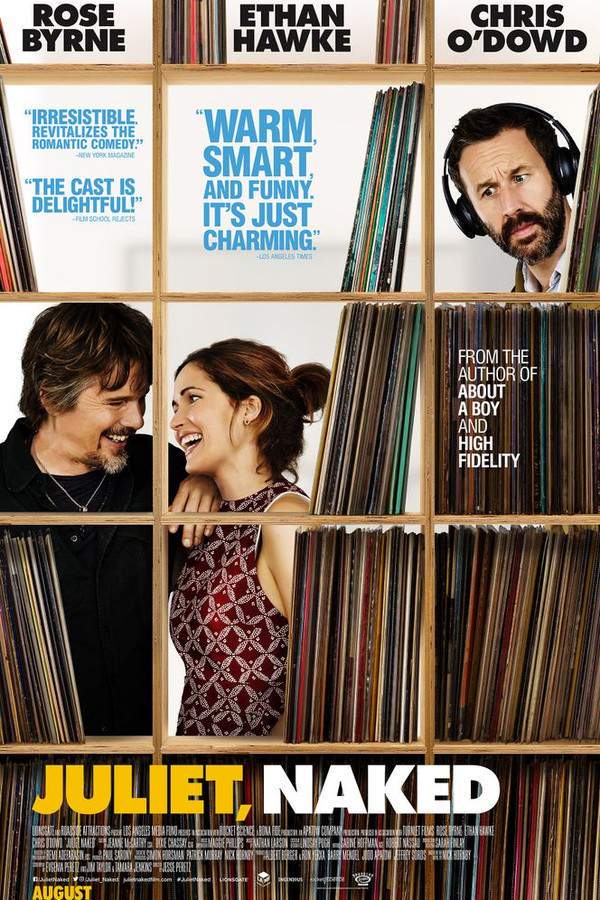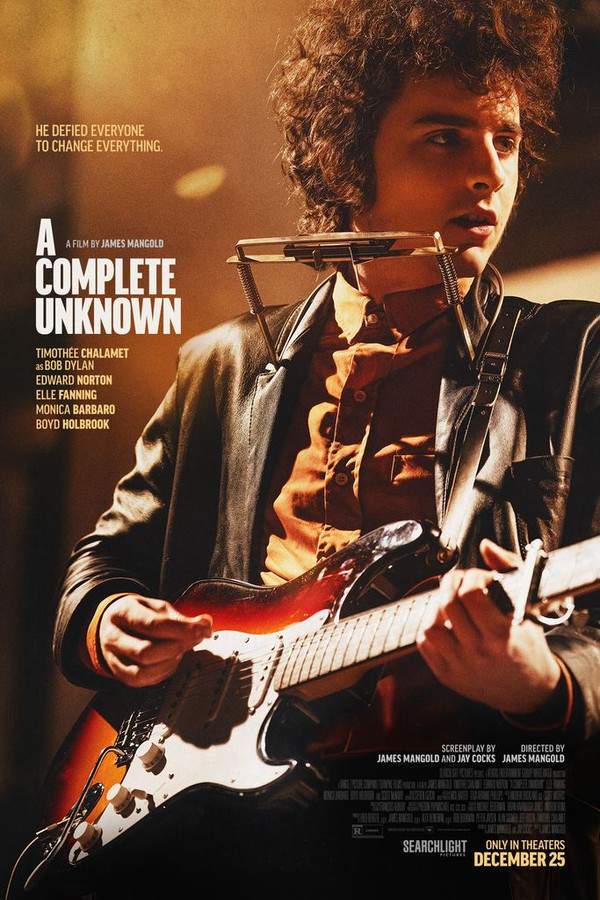
A Complete Unknown 2024
Directed by

James Mangold
Made by

Veritas Entertainment
A Complete Unknown Plot Summary
Read the complete plot summary and ending explained for A Complete Unknown (2024). From turning points to emotional moments, uncover what really happened and why it matters.
The narrative unfolds in 1961, capturing the arrival of a youthful Bob Dylan in New York City, eagerly seeking out the legendary musician Woody Guthrie. At the same time, another prominent artist, Pete Seeger, is embroiled in a legal battle over a song penned by Guthrie. Following a court dismissal, Pete, alongside his wife Toshi, performs the inspiring anthem “This Land is Your Land” right outside the courthouse, creating an electrifying atmosphere.
As the story progresses, Pete pays a visit to Woody in the hospital, where Bob unexpectedly joins them. In an intimate moment, Bob serenades the two with his heartfelt composition “Song For Woody.” Woody, despite his inability to verbalize, shows his approval by rhythmically pounding on the nearby dresser. Following this encounter, Pete graciously invites Bob to join his family, igniting Bob’s musical journey in the rich tapestry of New York’s folk scene.
As Bob hones his craft, he finds himself at an open mic night where he witnesses the captivating performance of Joan Baez. With a spark of attraction and charisma, Bob captures her attention while presenting his song “I Was Young When I Left Home.” This performance captures the eye of the ambitious music manager Albert Grossman, who promptly decides to take Bob under his wing. Despite Grossman’s eagerness to promote Bob’s original pieces, the executives push for Bob to record safer cover songs, compelling him to navigate the industry’s restrictive waters.
The plot thickens when Bob crosses paths with Sylvie Russo during a musical gathering. Their budding romance blossoms as they enjoy cinematic discussions post-viewing of “Now, Voyager.” However, their relationship faces turbulence when Sylvie criticizes Bob’s tendency to dominate conversations about himself, leading her to take an unexpected trip to Rome after a heated argument.
In the midst of his rising fame, Bob connects with Sylvie again under complex circumstances. Following a passionate performance of “Masters of War” in Joan’s presence, he spends the night with her, igniting yet another wave of emotional reflection. The morning after, Bob’s barbed comments regarding Joan’s music reveal the strife brewing between his personal ambitions and emotional connections.
As Bob experiences a meteoric rise, featuring in prominent performances and gaining the respect of icons like Johnny Cash, tensions simmer beneath the surface. Sylvie’s unease grows as she witnesses the deepening bond between Bob and Joan during their performances. In a notably poignant scene, Bob captures the essence of his creative turmoil through the performance of “The Times They Are A-Changin’”—an unforgettable moment that resonates deeply with the audience, including the likes of Pete, Toshi, and Joan, ultimately leaving Sylvie tearful.
By 1965, Bob emerges as a fixture of both fame and contention. Embracing the electric folk rock genre, he confronts backlash from traditionalists who prefer his classic sound. Encounters with overzealous fans further complicate his journey, including when he faces aggression over his iconic sunglasses. Seeking comfort in Sylvie’s embrace, he finds himself instead confronting the reality of her moving on with someone new.
With each passing event, Bob’s music evolves, paralleling the tumultuous social landscape of the era. He pushes forward, creating seminal tracks like “Subterranean Homesick Blues” and “Highway 61 Revisited,” solidifying his place in music history. A visit to the set of Pete’s program “Rainbow Quest” provides a platform for Bob to express his voice, showcasing his resilient spirit.
The climax unfolds dramatically at the Newport Folk Festival, where Bob’s new electric sound clashes with traditional expectations. Offstage quarrels erupt with Joan during their set, as he grapples with his artistic identity. Tensions peak amidst the ecstatic and hostile reactions of the crowd; however, Bob remains undeterred, delivering performances like “It Takes a Lot to Laugh, It Takes a Lot to Cry”. The juxtaposition of boos and cheers intertwines, accentuating the pivotal moment of rebellion against conformity.
In the aftermath of a polarizing performance, Bob and Joan exchange bittersweet farewells, with Joan reflecting on his newfound freedom to express his music however he chooses. Before departing on his motorcycle, he visits Woody one last time at the hospital, signifying a profound connection that resonates through the years.
As the credits roll, a poignant text reveals that mere weeks after the tumult of the Newport Festival, Bob Dylan released the legendary “Highway 61 Revisited,” a monumental album recognized as one of the most groundbreaking records in music history. The legacy of Pete Seeger shines through as he continues to advocate for folk music and civil rights until his passing in 2014. Joan Baez’s musical journey flourished with her own impressive catalog and the poignant “Diamonds and Rust” reflecting her past with Bob Dylan, while Bob himself emerged as a trailblazer in the music industry, even receiving the Nobel Prize for Literature—an unparalleled achievement highlighting his lasting impact on culture.
A Complete Unknown Timeline
Follow the complete movie timeline of A Complete Unknown (2024) with every major event in chronological order. Great for understanding complex plots and story progression.
Bob Dylan Arrives in NYC
In 1961, a young Bob Dylan, portrayed by Timothee Chalamet, arrives in New York City with dreams of making it in the music industry. He seeks out the legendary folk musician Woody Guthrie, who is a significant influence on his artistic aspirations.
Pete Seeger's Trial
Concurrently, musician Pete Seeger is on trial regarding a song written by Woody Guthrie. Following the courtroom proceedings, he performs 'This Land is Your Land' outside the courthouse alongside his wife, Toshi, highlighting the ongoing struggles of artists.
Visiting Woody Guthrie
Pete Seeger visits Woody Guthrie in the hospital, where Bob Dylan finds them. In a heartfelt moment, Bob performs his own song, 'Song For Woody,' eliciting an emotional response from Woody, who expresses his approval by banging on a dresser.
Entry into the Folk Scene
Pete Seeger introduces Bob to the vibrant New York folk music scene. As Bob starts to refine his craft, he attends an open mic night where he sees Joan Baez perform, sparking a connection that influences both his music and personal life.
Meeting Sylvie Russo
While performing at a church event, Bob meets Sylvie Russo, played by Elle Fanning, and sparks a romantic relationship. Their dynamic is explored through conversations and outings, revealing their contrasting views on life and aspirations.
Sylvie's Trip to Rome
After an argument over Bob's emotional distance, Sylvie takes an extended trip to Rome. This separation leaves Bob feeling reflective, ultimately leading to deeper musical exploration and performances.
Bob's Performance at a Show
Bob performs 'Masters of War' at a show, where Joan Baez is in attendance. Following this, they share an intimate moment, complicated by Bob's offhand remark about her music, which foreshadows the tension in their relationship.
Rising Fame
As Bob's career gains momentum, he performs 'Girl From The North Country' with Joan, attracting attention and acclaim. His growing popularity is marked by fan recognition on the street and a letter from Johnny Cash expressing admiration.
Changing Music Style
By 1965, Bob grapples with the pressures of conforming to the folk genre while feeling the urge to explore electric rock. His creative shift is met with mixed reactions from fans and business associates alike as he starts to record new songs.
Newport Folk Festival Controversy
At the Newport Folk Festival, Bob performs the iconic 'Maggie’s Farm,' revealing the tension between traditional folk fans and his new rock sound. The audience reacts harshly, but Bob remains resolute in his artistic direction despite the backlash.
Final Showdown with the Committee
Before his performance, Bob faces pressure from the festival committee, with Pete Seeger trying to persuade him to revert to his folk roots. Inspired by a conversation with Johnny Cash, Bob ultimately chooses to stay true to his music.
Performance of 'Like A Rolling Stone'
Bob and his band take to the stage, kicking off with 'Like A Rolling Stone.' The show is met with both applause and jeers, as fans are split between appreciation for his new style and nostalgia for his earlier work.
Reunion with Joan
After the festival, Joan Baez approaches Bob, acknowledging his triumph over musical constraints. Bob reflects on the complexities of success and what it truly means to win as he prepares to leave New York.
Visiting Woody One Last Time
In an emotional farewell, Bob visits Woody Guthrie in the hospital one last time, expressing gratitude for his influence. This act symbolizes Bob's connection to his roots as he embarks on his journey as a groundbreaking artist.
Release of 'Highway 61 Revisited'
Just a month after the Newport festival, Bob Dylan releases 'Highway 61 Revisited,' marking a pivotal moment in music history. This influential album cements his place as one of the most innovative musicians of his time.
A Complete Unknown Characters
Explore all characters from A Complete Unknown (2024). Get detailed profiles with their roles, arcs, and key relationships explained.
Bob Dylan (Timothée Chalamet)
Bob Dylan is portrayed as a young and ambitious musician navigating the complexities of love and fame. His introspective nature is contrasted with his rising status in the music industry, revealing a character torn between personal aspirations and societal expectations. Bob’s artistic evolution reflects his struggles to maintain authenticity amidst external pressures.
Sylvie Russo (Elle Fanning)
Sylvie Russo is a passionate and perceptive character who becomes romantically intertwined with Bob. Her character embodies both support and conflict, as she grapples with Bob's overwhelming focus on his own ambitions. Sylvie's journey introduces a voice of reason and vulnerability amid the chaos of Bob's rising fame.
Pete Seeger (Edward Norton)
Pete Seeger is depicted as a dedicated musician and advocate, wrestling with legal challenges yet committed to his art. He serves as a mentor figure for Bob, embodying the struggles of folk musicians during a transformative time. His character represents the intersection of music and activism.
Joan Baez (Monica Barbaro)
Joan Baez is a talented folk singer who shares a complicated relationship with Bob. Her advocacy for social causes complements Bob's journey, but also presents emotional challenges. Joan's character explores themes of love, rivalry, and artistic identity in the evolving music landscape.
A Complete Unknown Settings
Learn where and when A Complete Unknown (2024) takes place. Explore the film’s settings, era, and how they shape the narrative.
Time period
1961-1965
The film unfolds during the early 1960s, a time marked by significant cultural shifts and musical revolutions. This era saw the rise of folk music, with artists like Bob Dylan confronting social issues through their art. The transitional period leading to the mid-60s witnessed an evolving dynamic in music, as electric sounds began to challenge traditional folk roots.
Location
New York City, Rome, Newport Folk Festival
New York City serves as a vibrant backdrop for the film, known for its rich cultural history and bustling music scene in the early 1960s. The Newport Folk Festival, a significant event in American music, sees iconic performances and clashes between traditional and emerging styles. Rome, as the destination for Sylvie's trip, symbolizes a place of reflection and distance amidst the complexities of their romance.
A Complete Unknown Themes
Discover the main themes in A Complete Unknown (2024). Analyze the deeper meanings, emotional layers, and social commentary behind the film.
🎸
Music Evolution
The theme of music evolution is central to the film, highlighting the transition from traditional folk to electric music. Bob Dylan's journey reflects the struggle between artistic integrity and industry pressures, embodying a generation's desire for change. The film captures pivotal performances that redefine musical boundaries.
💔
Romantic Tensions
Romantic tensions permeate the narrative, particularly through Bob's relationship with Sylvie. Their emotional struggles underscore the challenges of balancing personal aspirations with romantic connections. The complexities of love amid fame and the pursuit of artistic excellence add depth to the storyline.
🌍
Social Change
The backdrop of the tumultuous social landscape of the 1960s is woven throughout the story. Bob's music serves as a voice for social justice and change, reflecting the era's political awakening. The film encapsulates the spirit of a generation seeking to redefine cultural norms.
A Complete Unknown Ending Explained
Unravel the ending of A Complete Unknown (2024) with our detailed explanation. Understand the final scenes, character fates, and unresolved questions.
The film concludes with Bob Dylan’s performance at the 1965 Newport Folk Festival, a pivotal moment in his career. At this point, Dylan’s decision to play electric guitar and perform with a blues band shock his folk audience, many of whom expected him to stick to traditional folk music. The reaction is mixed—some cheer, but many boo and show disappointment, feeling betrayed because they believed Dylan was one of their own. Dylan’s brief set, which ends with him leaving the stage frustrated, marks a turning point: he chooses to defy expectations and push musical boundaries, even if it alienates some fans. The ending then shows Dylan riding away on his motorcycle, a nod to his real-life motorcycle accident in 1966, which further isolated him from the public eye for a time. This scene is deliberately ambiguous, reflecting how Dylan’s true life and motivations remain shrouded in mystery. The film’s conclusion underscores that Dylan’s influence went far beyond that festival — he transformed music itself, inspiring future generations. The ending doesn’t try to fully explain Dylan’s choices or his personality; instead, it leaves his story open-ended, emphasizing the enduring enigmatic quality of one of music’s most influential and mysterious figures. In doing so, it captures the essence of who Dylan was: an artist constantly evolving and defying labels, forever an “unknown” to many, even as his legend only grew. This deliberate ambiguity invites viewers to interpret Dylan’s journey in their own way, making the story not just about a young musician’s rise but about the ongoing, elusive nature of his legacy.
Movies with Similar Twists and Themes
Uncover films that echo the narrative beats, emotional arcs, or dramatic twists of the one you're exploring. These recommendations are handpicked based on story depth, thematic resonance, and spoiler-worthy moments — perfect for fans who crave more of the same intrigue.
Featured on this page

What's After the Movie?
Not sure whether to stay after the credits? Find out!
Explore Our Movie Platform
New Movie Releases (2025)
Famous Movie Actors
Top Film Production Studios
Movie Plot Summaries & Endings
Major Movie Awards & Winners
Best Concert Films & Music Documentaries
© 2025 What's After the Movie. All rights reserved.



